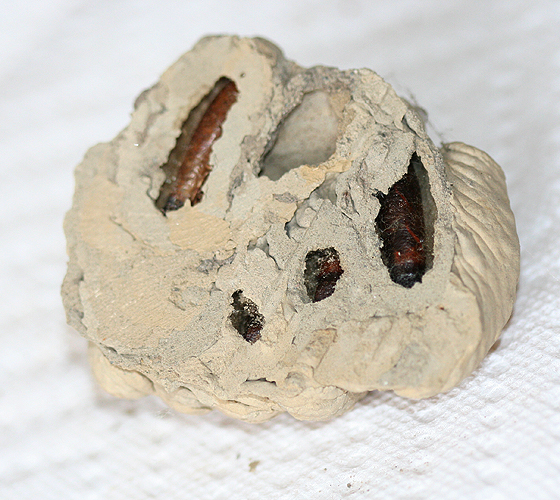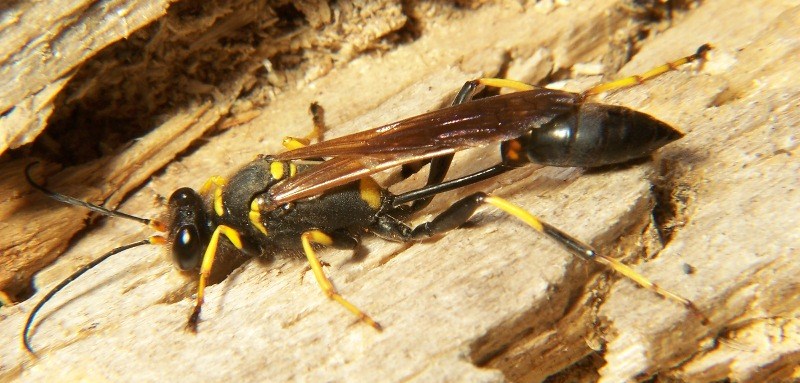Reproduction
The black and yellow mud dauber wasps have a low reproductive rate. The females lay only approximately 15 eggs over her entire life time (Kulzer 1996). Although little has been reported on how sperm is transported from the male to the female in Sceliphron caementarium, the general trend for insects is that the male inserts the sperm into the vagina of the female. Most of the time the sperm is stored in the seminal receptacle of the female which allows fertilization to occur later (Hickman et al. 2009).

The females usually do not stay in the actual nest over night, but stay in nearby bushes or structures to sleep (The Black and Yellow Mud Dauber 2005). As noted on the habitat page, females create the nests out of mud in either natural or man-made structures with mud collected at the edge of puddles or ponds. The nests are composed of approximately 25 cylindrical cells and in each cell the female lays an egg. Along with an egg, the female puts one or more spiders in each cell for the developing larva to feed on. The picture to the right shows a nest created by a female black and yellow mud dauber wasp. The cells each have a cocoon.
Copyright Lynette Schimming
After the female puts the spiders in the cell, she closes it with
mud and development soon begins! The egg hatches after only a few
days and becomes a larva. The larva eats the spider in the cell and
grows to approximately one inch long. They are a cream-like color,
legless and have an appearance of a maggot. The developing wasp
remains a larva for roughly three weeks and then spins a
cocoon in the cell and is now considered a pupa. The pupa usually
stays in the cocoon through the winter and comes out as an adult in
the spring. The total time from egg to adult is usually about one
year (BugFacts.net 2011). This type of development is called
complete metamorphosis which involves a complete change in
appearance from larva to adult and involves a number of molts
(Hickman et al 2009).

Click here to view a video of a mud dauber larvae spinning a cocoon!
Visit the contact us page to find out who put this site together!
